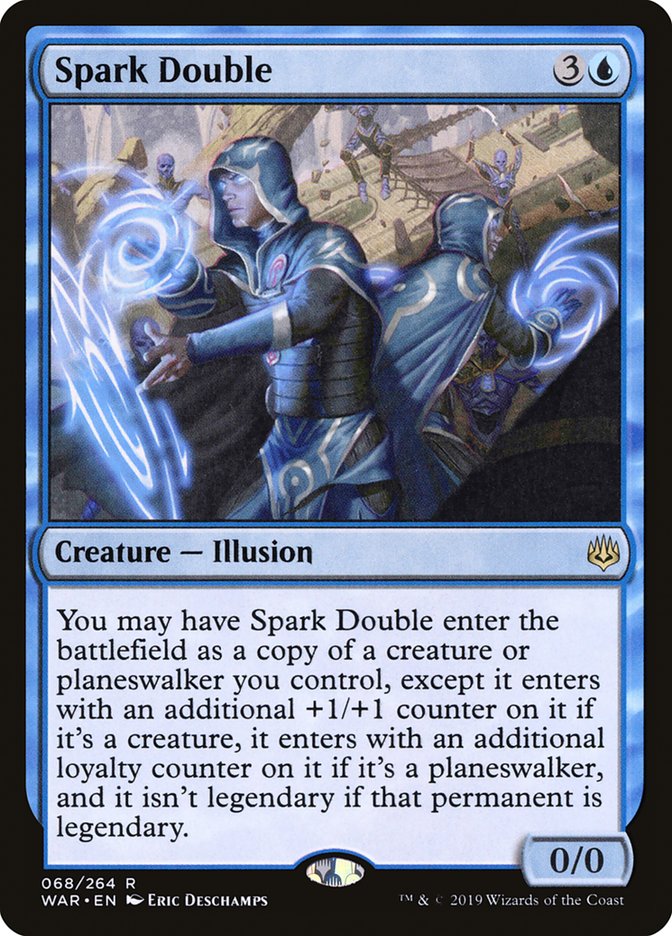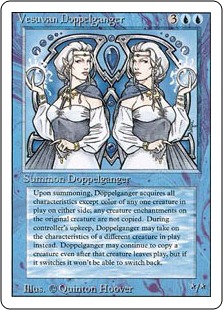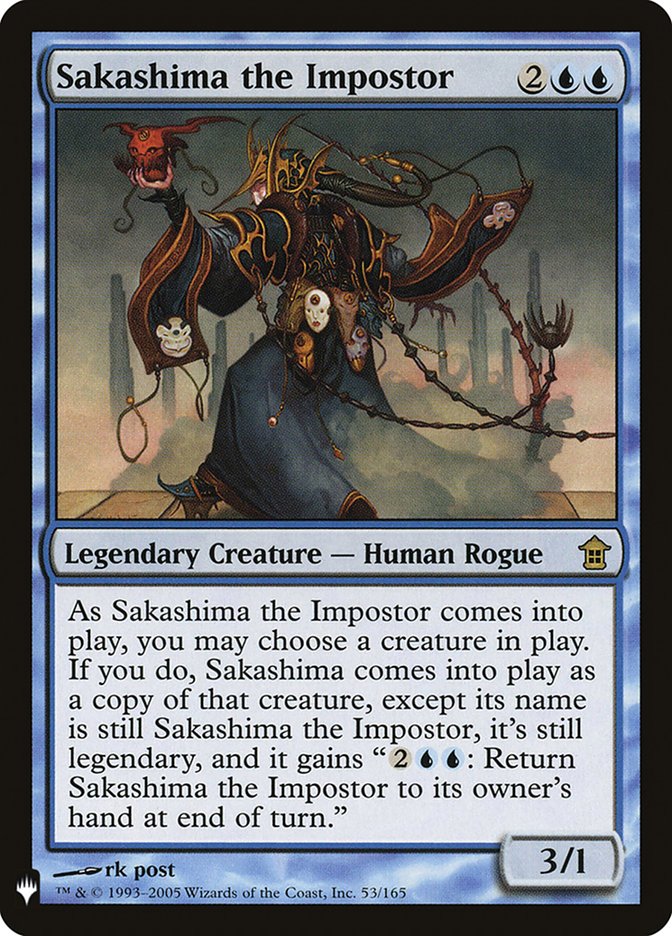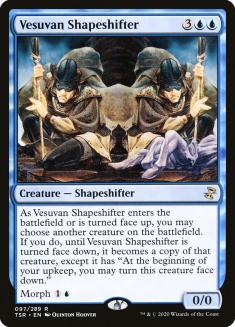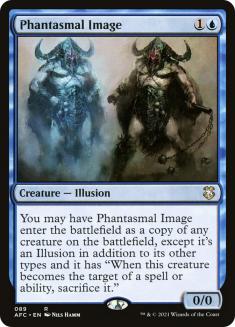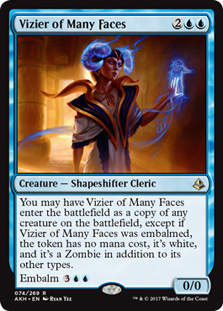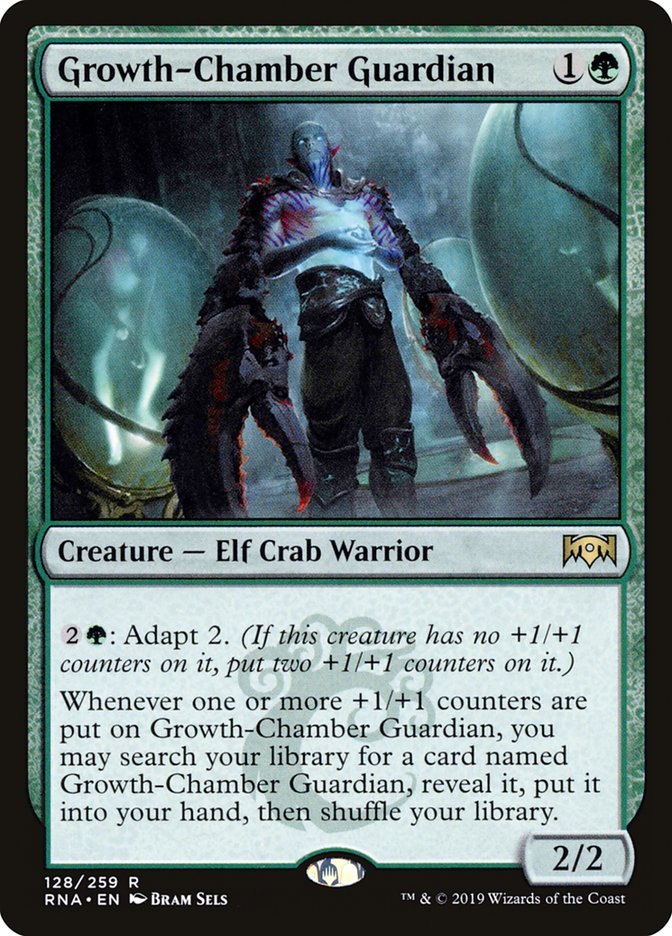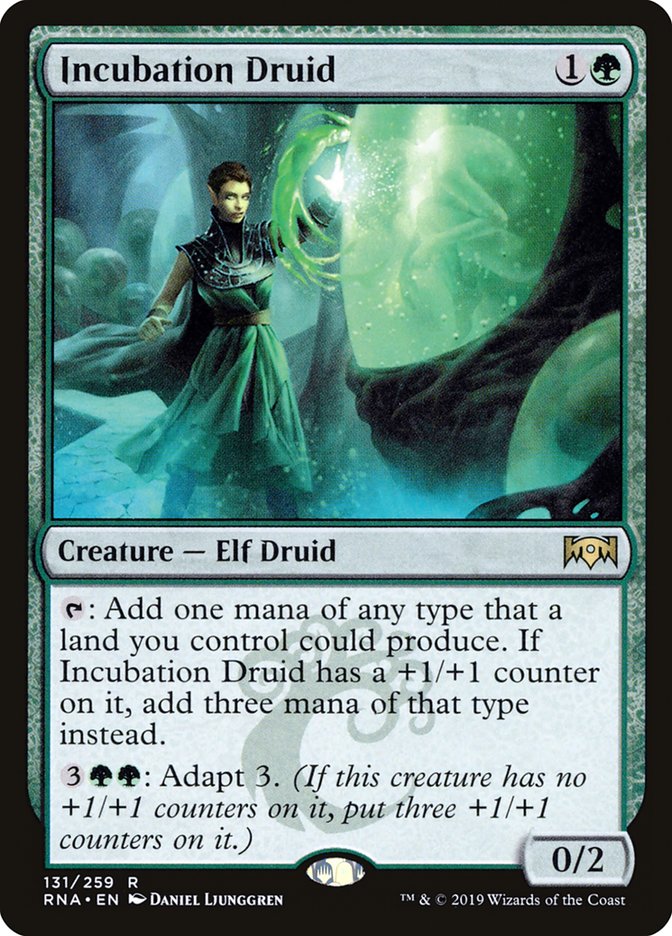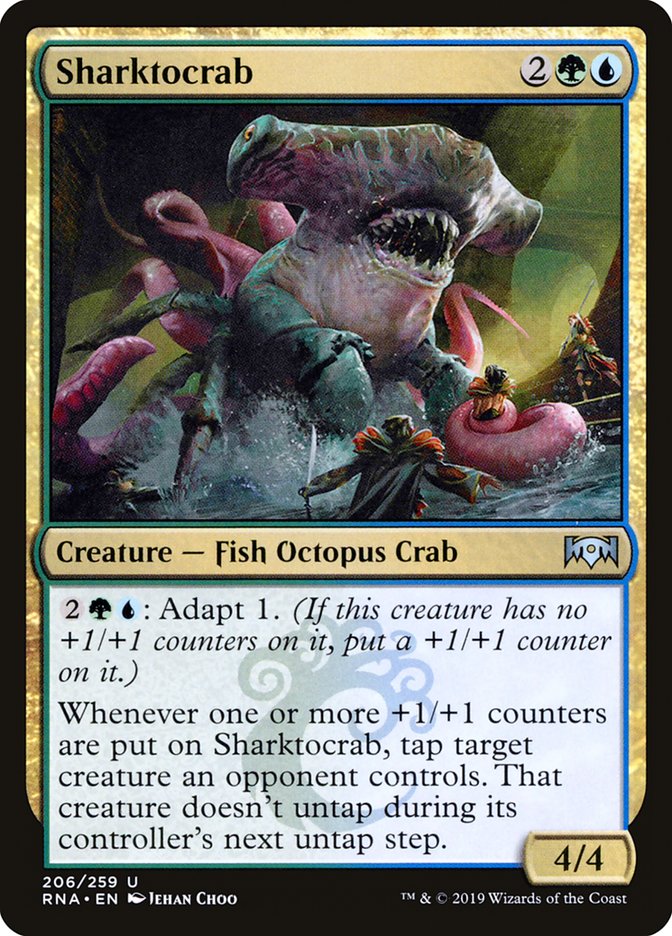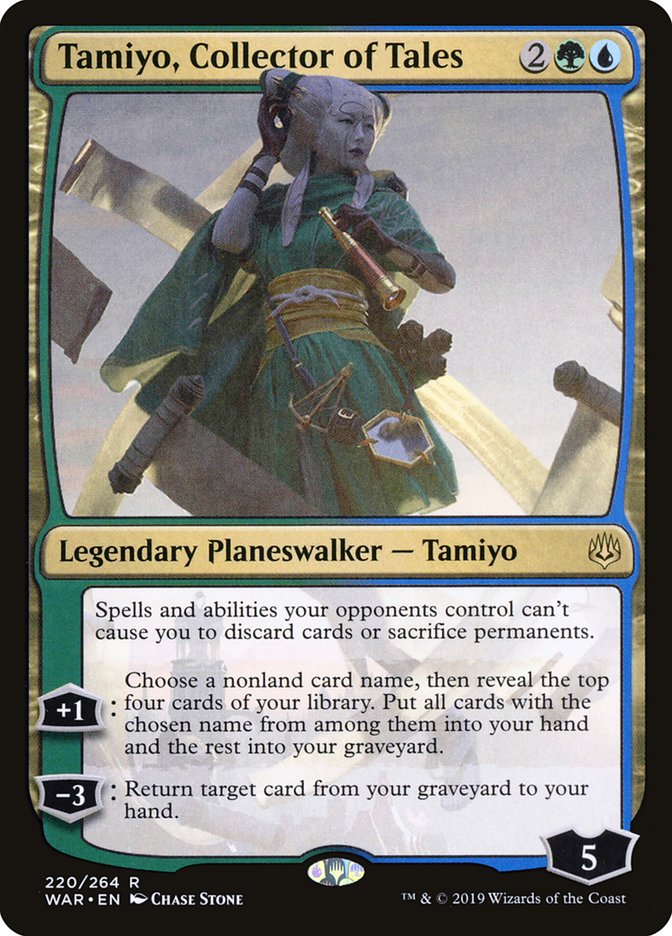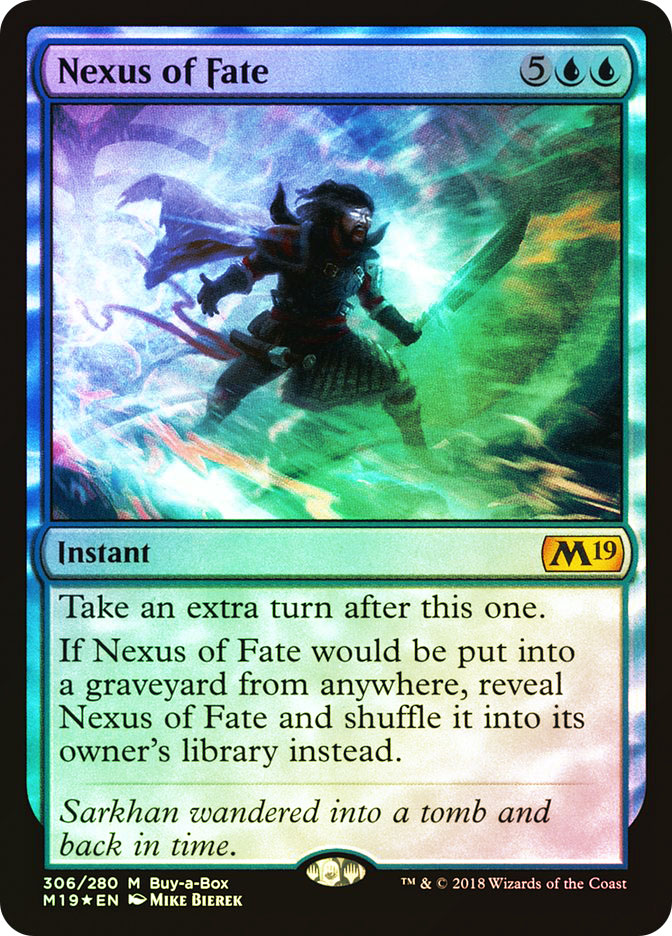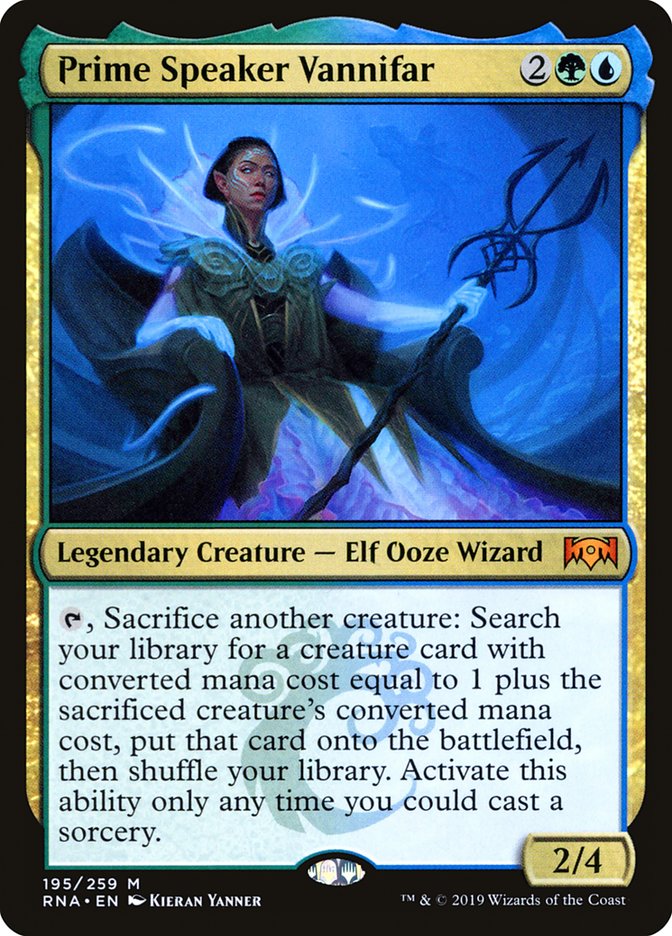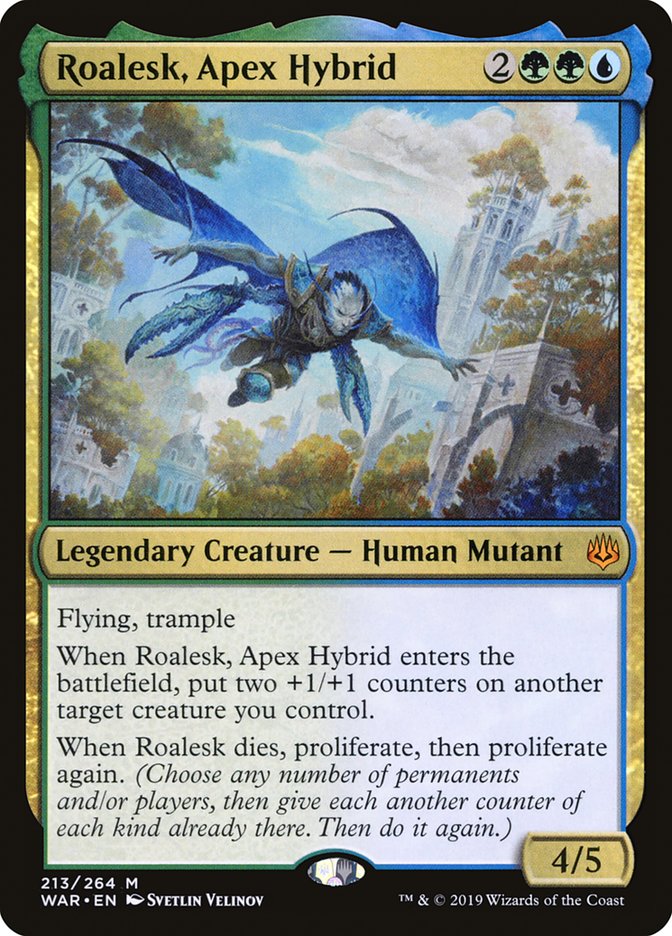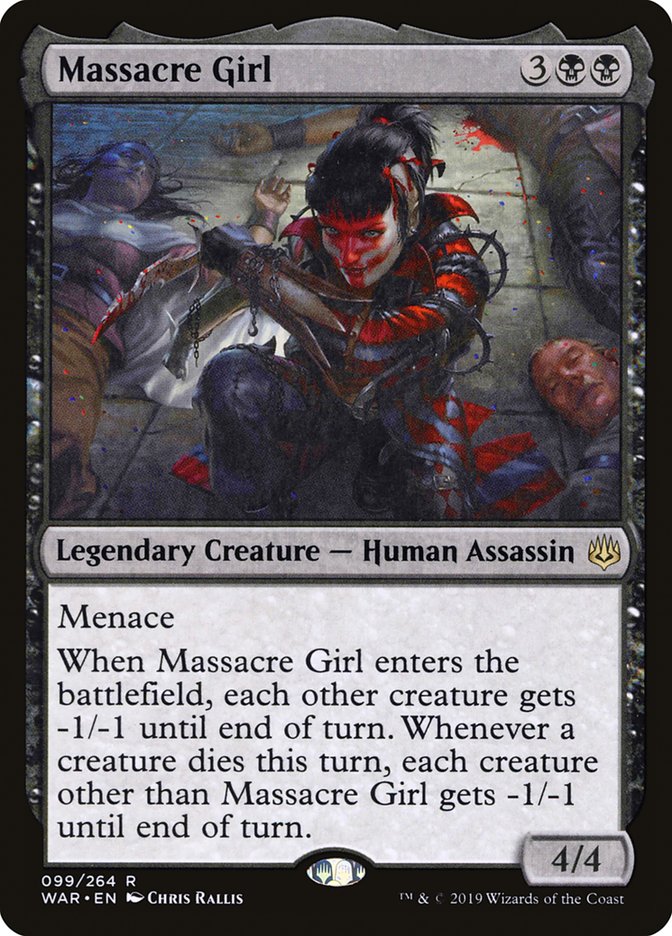War of the Spark continues its march through preview season, and it feels more like a sensory assault than any set before it. There are Elderspells and 10,000 planeswalkers and giant Boar Gods and Vintage-playable legendary artifacts and Turn 3 kills and infinite combos and it’s all just so much to process at once. For this reason, I can’t fault anyone for overlooking what feels like another in a long line of Clone variants.
Here’s the thing about that lineage of Clone variants, though: a lot of them hit in Standard.
Vesuvan Doppelganger and Clone were some of the hottest cards around when I got my introduction to Magic way back in the Stone Age. Sakashima the Impostor played an important role in Hypergenesis decks. Vesuvan Shapeshifter was an unlikely combo piece along with Brine Elemental in Time Spiral-era “Pickles” lock decks. Phantasmal Image has copied every creature from Progenitus to Champion of the Parish. And Vizier of Many Faces was just a key card in The Scarab God wars of last year’s Standard format. How, then, does Spark Double compare to its predecessors?
In one very key sense, Spark Double is dramatically worse. Unlike all these examples, Spark Double can only copy a creature you control. When your battlefield has been effectively dealt with, Spark Double will always be awful. This is a huge strike against Spark Double’s Constructed playability, as one of the key tenets of successful deckbuilding is a focus on flexibility and minimizing fail states. In some instances, though, the upsides of a narrow card can combine to make an option worth building around. Spark Double is doing several things we just don’t expect to see in a four-mana Clone.
First and foremost, Spark Double gains the capability to copy a planeswalker. With the aforementioned 10,000 new planeswalkers ready to redefine how games of Standard are played, this is an opportune time for the upgrade. Speaking of upgrades, Spark Double provides one for whatever creature or planeswalker it’s copying in the form of increased loyalty or power and toughness. Finally, Spark Double will not take on the legendary subtype of whatever it’s copying.
Each of these buffs requires some further analysis to really get to the core of what Spark Double is offering.
What if you could pay four less mana for each colorless spell you cast? If your Forests tap for three mana each? If you made two 1/1 Servos every time you cast a noncreature spell? If artifacts, instants, and sorceries your opponents cast cost two additional mana? If spells targeting your creatures and planeswalkers cost four additional mana? If each creature that died drew two cards? These scenarios say nothing about the fact that you just also have two active planeswalkers, ready to do their thing.
Next, consider the additional loyalty counter Spark Double places on a planeswalker. Loyalty is not as easy to come by these days, and in several instances, Spark Double buys an additional activation from a planeswalker who by default will only have limited activations available. Breaking the rules that these planeswalkers have in place seems like it will be a key way to maximize their impact, and Spark Double does a fine job in this role.
The other ability breaking the new planeswalker rules is proliferate, and Spark Double is more than willing to get in on this action as well. One card I simply cannot wait to double up on is Roalesk, Apex Hybrid. How is an opponent ever supposed to beat multiple copies of this card on the battlefield, especially when they all have +1/+1 counters on them? Brad Nelson did a great job writing about Roalesk last week, and I have to believe something as creature-dense as his aggro list would be an ideal home for a Spark Double or two. While only Ghalta and Roalesk represent mana discounts, copying something like a Steel Leaf Champion is never going to leave you feeling like you’ve underutilized your Clone.
Creatures (36)
- 4 Llanowar Elves
- 4 Merfolk Branchwalker
- 4 Ghalta, Primal Hunger
- 2 Jadelight Ranger
- 4 Steel Leaf Champion
- 3 Departed Deckhand
- 4 Nullhide Ferox
- 2 Kraul Harpooner
- 4 Pelt Collector
- 2 Frilled Mystic
- 3 Roalesk, Apex Hybrid
Lands (24)

Beyond proliferate buffs, there’s another Simic mechanic all too happy to accept some +1/+1 counters.
In the case of Growth-Chamber Guardian and Incubation Druid, much of the power in their adaptations is gated in the ability that is unlocked, not in the power and toughness boost itself. Spark Double getting to immediately fire up those abilities is a nice little interaction, and while I don’t think it will be the focal point of any gameplan, it is a little incentive to play these cards in the same decks.
Meanwhile, in the case of Sharktocrab, I’ve never gotten to write about this card before, and I just wanted an excuse to. Amazing stuff. Still not Standard-playable, but love it anyway.
All these abilities combine into a unique package that demands some exploration. As mentioned when discussing Simic Aggro, creature/planeswalker density will almost always be key in making Spark Double a reasonable option. Except here, where we will just swing for the fences.
Creatures (8)
Planeswalkers (4)
Lands (24)
Spells (24)

With only eight cards capable of being copied by Spark Double, we can’t really talk ourselves into more than three copies, and even that is ambitious. Augur of Bolas is hitting here at a 79.9% rate, which is about as good as you can get in a Nexus of Fate-based strategy. This deck jukes a bit from typical Simic Nexus builds and doesn’t offer the same weakness to enchantment removal. Meanwhile, we will almost certainly be able to lock out the entirety of an opponent’s combat step.
As Spark Doubles copy Tamiyo, Collector of Tales, the two identical planeswalkers working in unison can alternate between finding more copies of Root Snare or Pause for Reflection and returning previously used Tamiyos, Spark Doubles, Root Snares, or Pause from Reflections from the bin. Eventually, enough mana and Tamiyos will be present to just go looking for Nexus of Fates, take all the turns, and win the game at your leisure.
I chose to max Negates before playing Sinister Sabotage with the expectation that the main goal will always be protecting Tamiyos. Perhaps the versatility of Sinister Sabotage is just too good to pass up. As it stands, this is a narrower version of existing Simic Nexus decks, and likely a downgrade, but certain combat-reliant metagames would be powerless in the face of a strategy like this. Plus, you’ve got a more traditional Simic Nexus deck camped out in your sideboard!
If you’re looking for an option more replete with Spark Double targets, maybe I can interest you in some Prime Speaker Vannifar action?
Creatures (31)
- 4 Llanowar Elves
- 1 Hostage Taker
- 1 Wildgrowth Walker
- 4 Merfolk Branchwalker
- 3 Jadelight Ranger
- 1 Ravenous Chupacabra
- 1 Muldrotha, the Gravetide
- 1 Exclusion Mage
- 1 Stitcher's Supplier
- 1 Midnight Reaper
- 1 Lazav, the Multifarious
- 1 Plaguecrafter
- 4 Prime Speaker Vannifar
- 4 Fblthp, the Lost
- 1 Massacre Girl
- 1 Roalesk, Apex Hybrid
- 1 Spark Double
Planeswalkers (3)
Lands (23)
Spells (3)
- 3 Find

This deck may only have a single copy of Spark Double (and maybe that’s too conservative), but it’s a key addition, allowing two Vannifars to occupy the battlefield at the same time. This deck picked up upgrades in several other key spots. Fblthp, the Lost provides a realistic path to card advantage, and Vivien, Champion of the Wilds finally builds some instant-speed trickery into the deck. A planeswalker that can enter the battlefield on Turn 2 never hurts either. Plus, love that additional Fblthp interaction!
Bontu and Rhonas certainly deserve a look as the deck figures itself out, but I think Roalesk and Massacre Girl both carry more potential of representing a one-hit KO, and that’s what I’m really looking for in my Vannifar targets. As the pool of Standard-legal cards gets larger, Vannifar will always improve, and I wonder if Spark Double and friends finally unlocked the powerful Wizard.
I don’t expect Spark Double to define the new Standard, but it would be easy to focus in on the card’s limitations and not acknowledge just how many interesting interactions it brings to the table. A lot of preview season is defined by this mindset. It’s quite interesting that, while Modern and Legacy speculation seems to be defined by over-optimistic assessments that disregard the fundamental limitations and power level of the non-rotating formats, Standard speculation is often far too pessimistic and overly focused on rate. Break that trend and figure out how to make these fringe players work for you.


